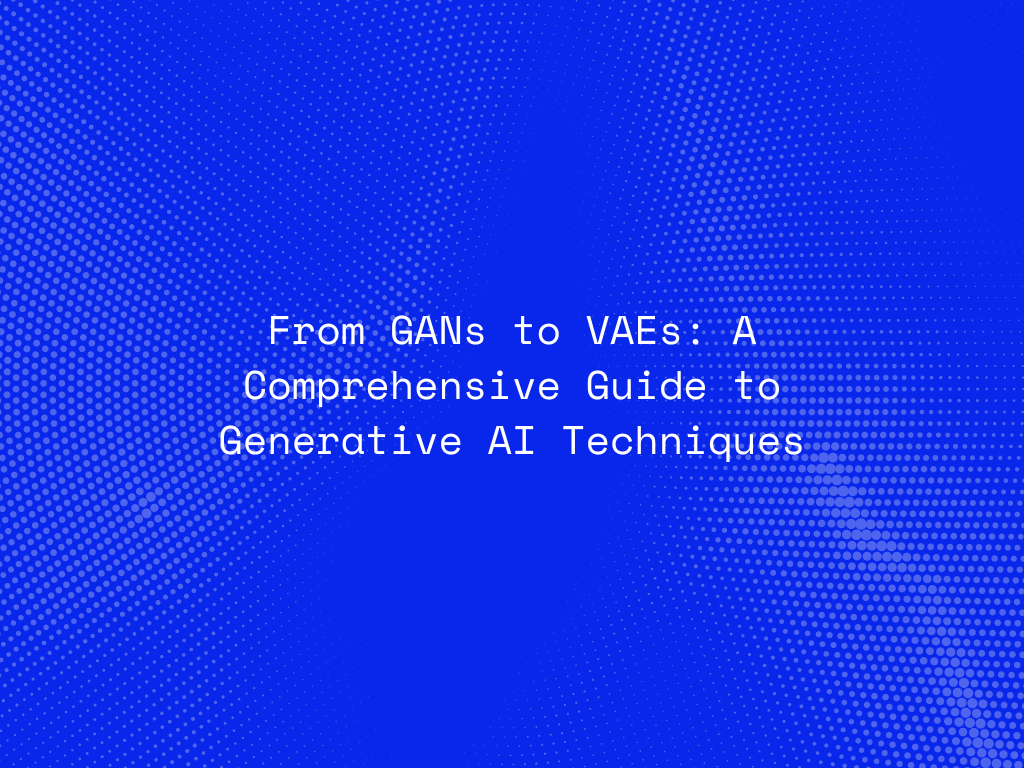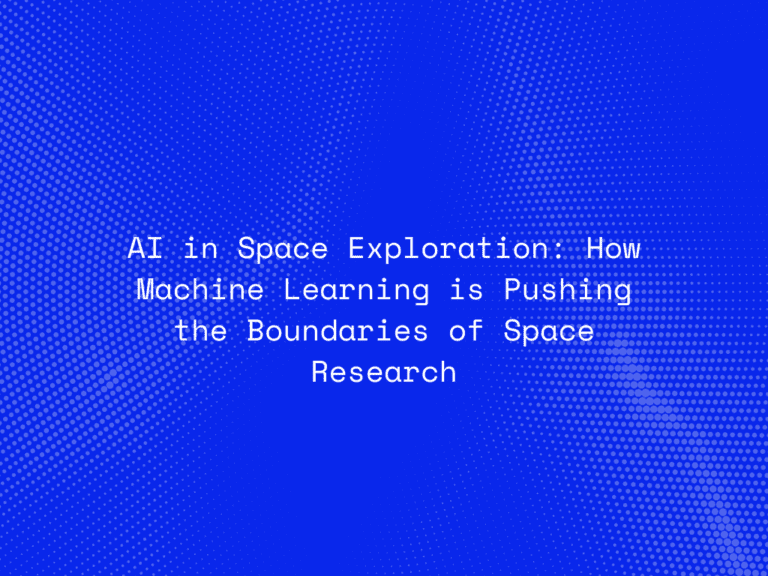Generative AI has taken the world by storm, revolutionizing how we create, interact with, and understand digital content. From creating hyper-realistic images and videos to generating unique music compositions and text, generative AI models have opened up a new realm of possibilities. Two of the most significant techniques in generative AI are Generative Adversarial Networks (GANs) and Variational Autoencoders (VAEs). In this comprehensive guide, we’ll delve into the principles behind these techniques, explore their applications, and discuss how they are shaping the future of AI-driven creativity.
What is Generative AI?
Generative AI refers to a subset of artificial intelligence that focuses on generating new data that mimics existing data. Unlike traditional AI models, which are primarily used for tasks like classification and prediction, generative AI models create new content, such as images, music, text, or even video. The key to generative AI is its ability to learn patterns from a dataset and then generate new instances that are similar but not identical to the original data.
Key Generative AI Techniques
Two of the most widely used techniques in generative AI are Generative Adversarial Networks (GANs) and Variational Autoencoders (VAEs). Both of these methods are based on deep learning and have been instrumental in advancing the field of generative AI.
Generative Adversarial Networks (GANs)
1. Overview:
- GANs, introduced by Ian Goodfellow and his colleagues in 2014, consist of two neural networks: the generator and the discriminator. These two networks are trained simultaneously in a process known as adversarial training. The generator creates synthetic data (e.g., images), while the discriminator evaluates the authenticity of the data, determining whether it is real (from the training set) or fake (generated by the generator).
2. How GANs Work:
- Generator: The generator’s role is to create data that is as realistic as possible. It starts with random noise and uses a series of layers to transform this noise into structured data.
- Discriminator: The discriminator is a binary classifier that attempts to distinguish between real and generated data. It assigns a probability score to each input, indicating whether it believes the input is real or fake.
- Adversarial Training: The generator and discriminator are trained together in a zero-sum game, where the generator tries to fool the discriminator, and the discriminator tries to avoid being fooled. Over time, the generator becomes better at creating realistic data, while the discriminator becomes better at detecting fakes.
3. Applications of GANs:
- Image Generation: GANs are widely used to create realistic images, including human faces, landscapes, and even artworks. Examples include NVIDIA’s StyleGAN, which can generate highly detailed human faces that are almost indistinguishable from real ones.
- Text-to-Image Generation: GANs can also be used to generate images from textual descriptions. For example, a GAN could generate an image of “a cat sitting on a windowsill” based on that phrase alone.
- Super-Resolution: GANs are employed to enhance the resolution of images, creating high-definition versions of low-resolution inputs.
- Deepfakes: While controversial, GANs are the technology behind deepfakes, where AI-generated videos and images mimic real people in a highly realistic way.
4. Challenges with GANs:
- Training Instability: GANs are notoriously difficult to train due to the delicate balance required between the generator and discriminator. If one network becomes too powerful, the training process can collapse.
- Mode Collapse: This occurs when the generator produces a limited variety of outputs, failing to capture the diversity of the training data.
- Resource Intensive: GANs often require significant computational resources and large datasets to produce high-quality results.
Connect With Us
Variational Autoencoders (VAEs)
1. Overview:
- VAEs, introduced by Kingma and Welling in 2013, are a type of autoencoder designed for unsupervised learning. VAEs are used to generate new data points by learning the underlying probability distribution of the training data. Unlike GANs, which are adversarial in nature, VAEs focus on probabilistic modeling.
2. How VAEs Work:
- Encoder: The encoder maps the input data to a latent space, which is typically a lower-dimensional representation. Instead of mapping to a single point, the encoder outputs a distribution (mean and variance) in the latent space.
- Latent Space Sampling: A key feature of VAEs is the reparameterization trick, which allows the model to sample from the latent space in a way that makes backpropagation possible. This step ensures that the latent space is continuous and allows for meaningful interpolation between points.
- Decoder: The decoder takes a sample from the latent space and maps it back to the original data space, effectively reconstructing the input data. During training, the VAE learns to generate data that is as close as possible to the original input.
3. Applications of VAEs:
- Data Generation: VAEs are used to generate new data points that resemble the training data. This can include generating images, text, or other types of data.
- Dimensionality Reduction: VAEs can be used to reduce the dimensionality of data, similar to traditional autoencoders, but with the added benefit of a probabilistic interpretation of the latent space.
- Anomaly Detection: By learning a probability distribution over the data, VAEs can identify anomalies as data points that have low likelihoods under the learned distribution.
- Latent Space Exploration: VAEs enable the exploration of the latent space, allowing for the generation of new data points that interpolate between known examples.
4. Challenges with VAEs:
- Blurriness: VAE-generated images can sometimes be blurry compared to those generated by GANs, as VAEs optimize for reconstructing data rather than focusing solely on sharpness and detail.
- Complexity in Modeling: VAEs require careful design and tuning of the encoder, decoder, and latent space to produce high-quality results.
- Lower Fidelity: In some cases, VAEs may struggle to capture fine details in data compared to GANs, making them less suitable for certain high-resolution tasks.
Connect With Us
Comparing GANs and VAEs
While GANs and VAEs are both powerful generative models, they have distinct differences that make them suitable for different applications:
-
Training Approach:
- GANs rely on adversarial training, which can be challenging but allows for the generation of highly realistic data. VAEs, on the other hand, use a probabilistic approach that is generally more stable but may produce less sharp outputs.
-
Output Quality:
- GANs typically produce sharper, more detailed images compared to VAEs. However, VAEs offer more structured and interpretable latent spaces, which can be advantageous for certain tasks.
-
Applications:
- GANs are often preferred for tasks that require high-quality image generation, such as creating realistic photos or artworks. VAEs are better suited for tasks that benefit from a well-organized latent space, such as anomaly detection or generating new data points within a continuous distribution.
-
Complexity:
- GANs are more complex to train and require careful balancing of the generator and discriminator. VAEs are generally easier to train but may require more sophisticated modeling of the latent space to achieve high-quality results.
Emerging Trends and Future Directions
As the field of generative AI continues to evolve, several trends are emerging that are likely to shape the future of GANs, VAEs, and other generative models:
-
Hybrid Models:
- Researchers are increasingly exploring hybrid models that combine the strengths of GANs and VAEs. These models aim to leverage the high-quality output of GANs with the structured latent spaces of VAEs, offering the best of both worlds.
-
Self-Supervised Learning:
- Self-supervised learning is gaining traction as a way to train generative models using large amounts of unlabeled data. This approach could significantly expand the applicability of generative AI across different domains.
-
Ethical Considerations:
- As generative AI becomes more powerful, ethical concerns are coming to the forefront. Issues such as deepfake creation, intellectual property, and the potential for misuse of AI-generated content are driving discussions about the responsible development and deployment of generative technologies.
-
Real-Time Applications:
- Advances in computational power and model efficiency are paving the way for real-time generative AI applications. This includes interactive AI-driven content creation tools, real-time video generation, and dynamic personalization in virtual environments.
Conclusion
Generative AI techniques like GANs and VAEs are revolutionizing the way we create and interact with digital content. Each approach offers unique strengths and challenges, making them suitable for different applications. As these technologies continue to evolve, they hold the potential to unlock new creative possibilities and transform industries ranging from entertainment and design to healthcare and beyond.
Understanding the principles behind GANs and VAEs is crucial for anyone looking to harness the power of generative AI, whether for research, innovation, or practical applications. As we look to the future, the ongoing development of these techniques promises to further blur the lines between reality and imagination, opening up new horizons for AI-driven creativity.




